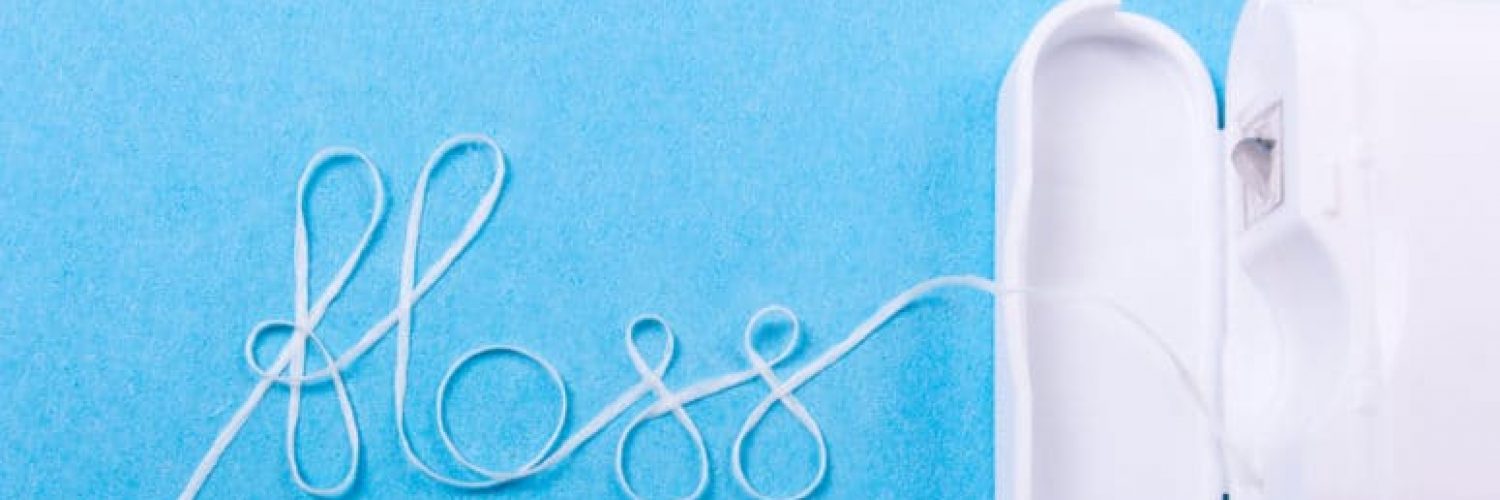Even though it is recommended to floss at least once each day, it is safe to assume that most adults don’t accomplish this goal. The idea behind flossing is to remove plaque, which contains bacteria that feed on leftover food or sugar in your mouth and releases an acid that can eat away at the outer shell of your teeth and cause cavities. When you brush, you are removing plaque from the larger surfaces of your teeth. What is often missed during brushing are the small nooks and crannies between your teeth. This is where flossing comes into play. Using dental floss, a dental pick, a pre-threaded flossed, or even a tiny brush you can reach those small hard to clean areas and remove plaque build up which can cause problems if left unattended.
Here are some of the many misconceptions about flossing
1. You DON’T have to floss that often: Once a day is plenty. Flossing more than once a day is really irritating to the gums. Irritating those gums can cause inflammation and bleeding, no one wants that.
2. Blood doesn’t always mean what you think it means: Yes, bleeding gums can be a sign of gum disease and you absolutely should talk to your dentist about it. However, if you floss too seldom you could experience bleeding when you finally do try to dig that plaque out. So remember, keep it regular but not too regular.
3. Flossing is not something to simply check off your list: I am definitely guilty of quickly running the string between each tooth and calling it good. If you aren’t taking your time and getting a good clean, you might as well not floss at all. It should take you two whole minutes to properly floss your teeth. I know, it’s hard enough to brush for that long, but believe me it’s worth it.
4. It’s not just about the gap: We absolutely need to get all the day’s food out from those tricky gaps in our teeth, but flossing is about more than that. The plaque will cling to the sides of your teeth. Make sure you are running the floss down the sides of both teeth to scrape any unwanted plaque away.
5. The type of floss you use matters: Of course, it is important for you to find a floss that agrees with you and your pocketbook. A lot of floss can tear and shred as you use it and will get in the way of a proper clean. A strong floss can make your life a whole lot easier and will help to clear all the unwanted buildup.
6. Flossing doesn’t just stop at the teeth: Your gums need your attention. A lot of that nasty gunk makes its way underneath the surface of your gums. This is some sensitive stuff-don’t take it too far. You don’t have to tear your gums apart. Simply slide the floss up into the gum line. If it hurts, you’ve gone too far.
7. You need to use a generous amount of floss: 18 inches. Yup, EIGHTEEN whole inches is what you should shoot for. You will want to wrap the sides evenly around your fingers and leave yourself an inch or two to work with. You want such a generous amount because you should be using a clean section on each tooth. The last thing you want to do is spread the plaque around. You might think I’m crazy, but give it a try and you will notice a much better clean.
8. There IS a correct way to be flossing: You would think that running a glorified piece of string between your teeth would be foolproof. But, believe it or not- there is a specific technique you should follow.
To get the floss in and out of each gap GENTLY saw the floss back and forth until you are through. Do NOT continue to saw the floss to clean the area. This will only move the plaque around instead of removing it all together. Once you are properly placed between the teeth then gently run the floss up into the gum line and scrape down each tooth.
Once You Start, You Won’t Want to Stop!
By now, everyone has seen the meme with the guy saying, “I don’t always floss, but when I do it’s just before a visit to the dentist.” It is funny probably because most people can relate. We don’t nag or threaten our patients when it comes to flossing. All we can do is educate our patients on its merits and hope that we are able to convince a few that flossing will add years to your dentition.
Sometimes, a few converted souls become like converted smokers: flossing champions challenging others to adopt this healthy lifestyle.
Flossing is just like any other new skill, there’s a learning curve and to be mastered it must be practiced. The first month will be a series of endless awkward starts and stops as you learn to manipulate the floss in your mouth. Eventually, you will find yourself becoming better and better at it.
You will notice that your gums are bleeding less and that they are beginning to look more pink and less puffy.
I heard a quote once that said that trying to start to floss is like trying to quit smoking. What if I told you that if you tried it for one month your home care routine will begin to feel unfinished without the flossing step? That if, practiced faithfully, you will experience flossing withdrawal if you go even a few days without doing it? It is true.
We Are Here to Help
Do you have extremely sensitive teeth or have you had dental work done (like braces or permanent or fixed bridges) it is a good idea to check with your dentists at Eagle Rock Dental Care about what tools you use to floss. In some cases, it can be a good idea to use a water flosser if you have trouble flossing by hand. We are here to assist you in proper technique and address any questions you have concerning your dental care. Schedule an appointment with us today.

